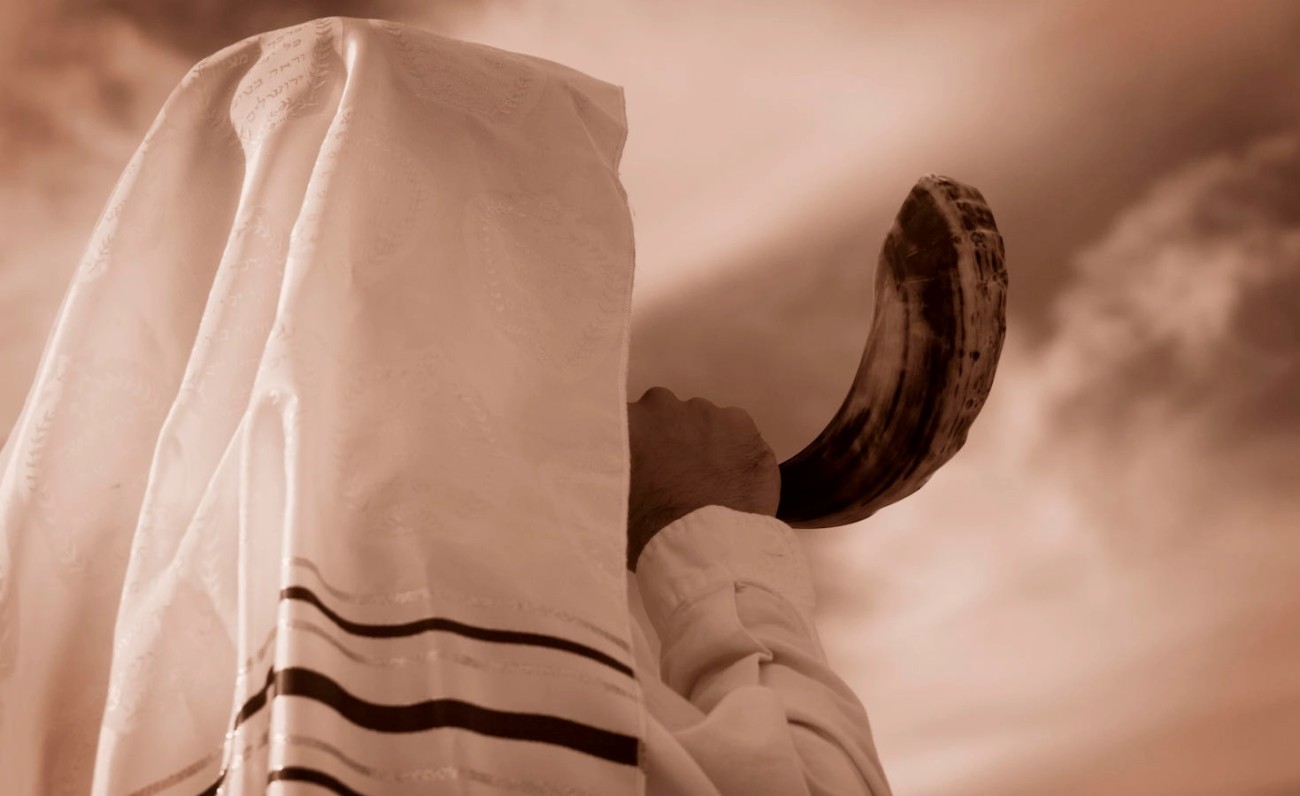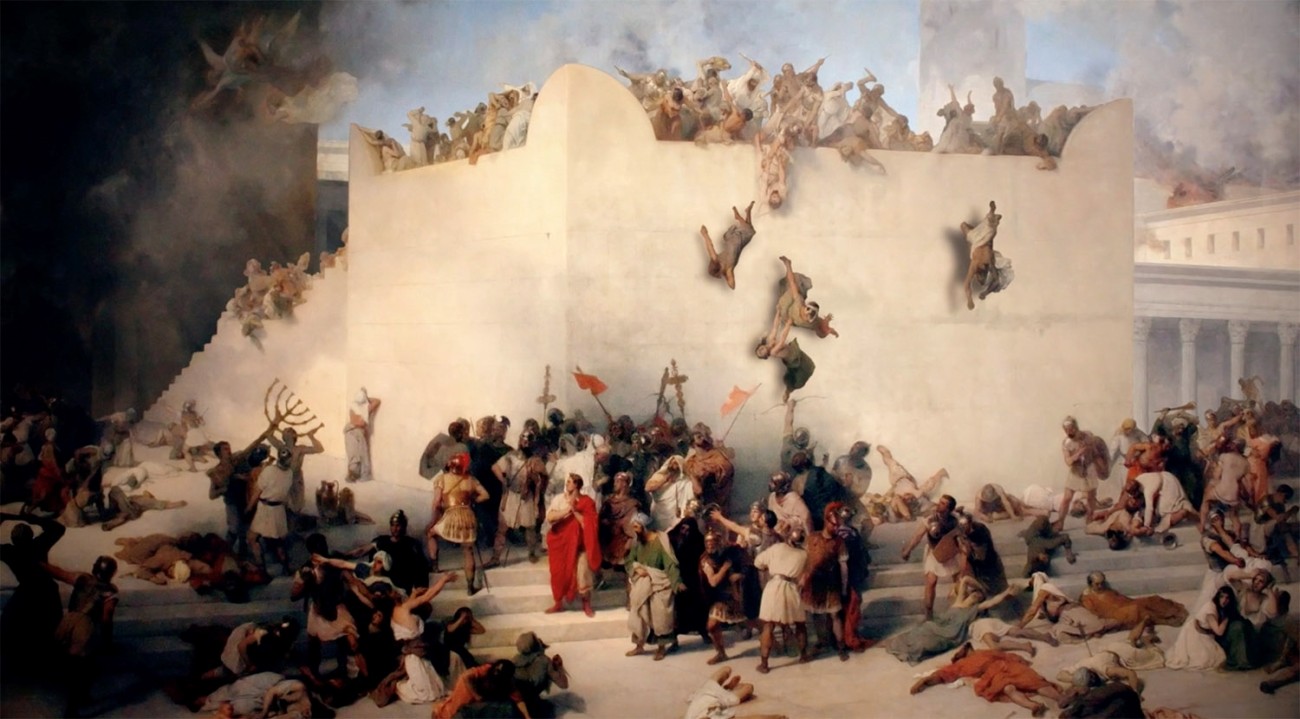
The Holy Land, a region of profound historical and religious significance, has been a focal point of human civilization for millennia. Known today as Israel and Palestine, this area has seen the rise and fall of empires, the birth of major world religions, and continuous human habitation. Central to its history is the enduring presence of the Jewish people, whose connection to the land spans well over three millennia. This article explores the history of the Holy Land up to 1945, with a particular emphasis on the continuity of Jewish presence.
The earliest evidence of human settlement in the Holy Land dates back 1.5 million years in the form of a Hominin child’s bone, the second oldest human remain found outside Africa. Archaeological evidence indicates that Jerusalem has been inhabited since about 5,000 BC – seven thousand years. The earliest documented evidence of the existence of Israel is found in an Egyptian inscription that has been dated to 1,208 BC and it is commonly accepted that the history of the Jewish people begins with the biblical patriarchs, Abraham, Isaac, and Jacob, round the 2nd millennium BC.
According to the Hebrew Bible, God promised Abraham and his descendants the land of Canaan, which corresponds to modern-day Israel and the areas designated ‘Palestine’. The narrative continues with the Exodus, with Moses leading the Israelites out of Egyptian bondage, traditionally dated to the 13th century BC. After wandering in the desert for 40 years, Joshua and the Israelites conquered Canaan. Archaeological evidence, such as the destruction layers in cities like Jericho and Hazor, supports the biblical account of a significant upheaval during that period.
The establishment of the United Monarchy under Saul, David, and Solomon around the 11th to 10th centuries BC marks a significant era in Jewish history. King David established Jerusalem as the political and spiritual capital, and his son Solomon built the First Temple, solidifying the city's centrality in Jewish life. This period is often seen as a golden age, with the kingdom reaching its zenith in terms of territorial expansion and cultural development.
After Solomon's death, the kingdom split into Israel in the north and Judah in the south. The northern kingdom fell to the Assyrians in 722 BC, leading to the dispersion of the ten tribes. Despite this, the southern kingdom of Judah, with Jerusalem as its capital, continued to thrive for another century and a half.
In 586 BC, the Babylonians, under Nebuchadnezzar II, conquered Judah, destroyed the First Temple, and exiled a significant portion of the Jewish population to Babylon. This period of exile, however, was relatively short-lived. In 538 BC, the Persian king Cyrus the Great conquered Babylon and allowed the Jews to return to their homeland and rebuild the Temple, an event chronicled in the books of Ezra and Nehemiah.
The return from exile marked the beginning of the Second Temple period, which lasted until 70 BC. Under Persian rule, the Jewish community in Judah, now known as Yehud, enjoyed a large degree of autonomy and this period saw the compilation of significant portions of the Hebrew Bible and the establishment of the synagogue as a central institution in Jewish life.
The conquest of the Persian Empire by Alexander the Great in 332 BC introduced Hellenistic culture to the region. The subsequent rule of the Ptolemies and Seleucids brought both challenges and opportunities for the Jewish community. The Maccabean Revolt (167-160 BC) against the Seleucid king Antiochus IV Epiphanes, who had desecrated the Temple, led to the establishment of the Hasmonean dynasty and a brief period of Jewish independence.
In 63 BC, the Roman general Pompey conquered Jerusalem, and the region became a client state of the Roman Republic. Herod the Great, appointed king by the Romans, undertook massive building projects, including the expansion of the Second Temple, transforming it into a magnificent edifice.

Tensions between the Jewish population and Roman authorities culminated in the Great Revolt (66-70 AD). The Romans, under Titus, besieged Jerusalem and destroyed the Second Temple in 70 BC, a catastrophic event for the Jewish people. A second major revolt, led by Simon Bar Kokhba (132-135 AD), was also brutally suppressed, leading to widespread devastation and the renaming of Judea Syria Palaestina by the Romans in an attempt to erase Jewish ties to the land. The Romans derived the name from the Philistaei, or Philistines, a people who had once lived near modern day Gaza. Perhaps some Roman ironist knew the story of David and the Philistine Goliath.
Despite these upheavals, Jewish life in the Holy Land persisted. During the Byzantine period (4th-7th centuries AD), Jews continued to live in cities like Jerusalem, Tiberias, Sepphoris, and Caesarea. The compilation of the Jerusalem Talmud in the 4th century CE is a testament to the vibrant Jewish scholarly activity during this time.
The Islamic conquest of the region in the 7th century AD brought new dynamics, sometimes tolerance, sometimes oppression. Under Muslim rule Jews, like Christians, were sometimes considered "People of the Book" and allowed to practice their religion, albeit with severe legal restrictions and financial obligations.
The Jews often suffered brutally under Muslim rule, but the Umayyad and Abbasid caliphates, when they saw periods of relative stability and prosperity, are often considered something of a Golden Age of Muslim tolerance. Some Jewish historians dispute this and say that the idea of the Golden Age utopia is misplaced, pointing out that from the very beginning Muhammad was bent on extirpating the Jews and that the Qur’an and other early Islamic sources are packed with anti-Jewish, even anti-Semitic, venom. In their view, rather than protecting the Jews, Islam persecuted them relentlessly, often as badly as medieval Christendom.
In the opinion of this writer, relative Muslim tolerance can be explained mainly because, unlike Christendom, there was no religious exclusivity in Muslim-dominated regions, with very large Jewish, Christian, Zoroastrian and other religion populations. In addition to that, for all its harsh language referring to Christians and Jews, the Qur’anic verse, “there is no compulsion in religion” (Sura 2:256), was understood to mean that the non-Muslims were not to be forcibly converted and, moreover, as venerated “Peoples of the Book” (Ahl al-Kitab), Jews and Christians were allowed to live securely in their autonomous communities.
Legally speaking, Jews and other non-Muslims were classed as dhimmīs, or “protected people.” who were obliged to pay an annual poll tax and subject to regulations prescribed in the so-called Pact of Umar, under which new houses of worship could not be built and old ones could not be repaired. Dhimmīs were to act humbly in the presence of Muslims, honour the pre-eminence of Islam and were required to differentiate themselves from Muslims by their clothing (quite possibly giving us a glimpse of Europe in a hundred years’ time).
The arrival of the Crusaders in the late 11th century did nothing to improve life for Jews, and the capture of Jerusalem in 1099 was marked by widespread massacres of both Jews and Muslims. Jewish communities, however managed to survive in several parts of the Holy Land, such as Galilee.
The Mamluks, non-Arab slave-soldiers and freed slaves who were assigned high-ranking military and administrative duties, serving the ruling Arab and Ottoman dynasties, and who took control of the region in the 13th century, were generally more tolerant of the Jewish presence. Jewish communities in cities like Jerusalem and Safed, which emerged as a centre of Jewish mysticism (Kabbalah) in the 16th century, began to grow.
The Ottoman conquest of the Holy Land in 1517 ushered in a period of relative stability that lasted for four centuries. The Ottomans were generally tolerant rulers, and Jewish communities flourished in cities like Jerusalem, Hebron, Safed, and Tiberias. The local Jewish population was also significantly bolstered by the arrival of Jewish refugees from Spain and Portugal, expelled during the Inquisition.
The decline of the Ottoman Empire and increasing European interest in the region led to greater foreign influence, and the 19th century brought significant changes to the Holy Land. During this period, the Jewish population in the Holy Land grew again, this bolstered mainly by immigration from Eastern Europe.
The late 19th century saw the rise of the Zionist movement, founded by Theodor Herzl, which sought to establish a Jewish homeland in Palestine. The First Aliyah (1882-1903) and the Second Aliyah (1904-1914) brought thousands of Jewish immigrants to the region, who established agricultural settlements and revived Hebrew as a spoken language.
At no time has ‘Palestine’ ever existed as an independent entity. The Turks, who ruled it for around four hundred years, did so as a backwater of their province of Syria, with its capital in Damascus. And backwater it was. A famous western visitor to the Holy Land was Mark Twain 1867. He dealt with Jews in Jerusalem, which has probably always had a Jewish majority, and did a tour of the whole country. He was not impressed.
In his book about it, Innocents Abroad, Twain explicitly and repeatedly states that the area was desolate and devoid of inhabitants. His group entered the Holy Land from the north, passing through such sites as the Sea of Galilee, the Banias, Nazareth, Jenin and Nablus.
Riding on horseback through the Jezreel Valley, one of Israel’s most fertile areas, Twain observed, “There is not a solitary village throughout its whole extent – not for 30 miles in either direction. There are two or three small clusters of Bedouin tents, but not a single permanent habitation. One may ride 10 miles, hereabouts, and not see 10 human beings.”
Twain was not alone in his poor impression of the land of milk and honey. Historians and travellers alike made similarly dreary observations over the centuries. Innocents Abroad brought global attention to the sorry state of Palestine and proved that Palestine was a land without a people just 15 years before the First Aliya and the subsequent waves of Jewish immigration.
World War I marked another turning point. The defeat of the Ottoman Empire led to the British occupation of Palestine. The Balfour Declaration of 1917, in which the British government expressed support for the establishment of a "national home for the Jewish people" in Palestine, was a significant milestone for the Zionist movement.
The League of Nations granted Britain the mandate over Palestine in 1920, with the responsibility of implementing the Balfour Declaration. The interwar period saw increased Jewish immigration, with significant tracts of land bought from (often absent) Muslim landowners, which would later form the backbone of the State of Israel.
The growing Jewish presence and the Zionist aspirations led to tensions with the Arab population, which had also grown significantly since the arrival of the British, with people from neighbouring countries coming to find work. The 1920s and 1930s were marked by periodic outbreaks of violence, such as the riots of 1920, 1921, and 1929, and the Arab Revolt of 1936-1939. The British response included the issuance of the White Paper of 1939, which limited Jewish immigration and land purchases, a move that was seen as a betrayal by the Jewish community. It was certainly a betrayal of the Balfour Declaration.
In conclusion, contrary to the pro-Palestinian propaganda put out by the likes of the biased BBC, there has been a continuous Jewish presence in the Holy Land, but never, in all its long history, has there been an independent, recognisable or recognised Palestinian entity. Up to about 1945, Muslim Arabs in the area thought of themselves as Syrians, from where many were descended.
The next of this series, in the run up to the anniversary of Hamas’s barbaric attack, will deal with the establishment of the State of Israel.